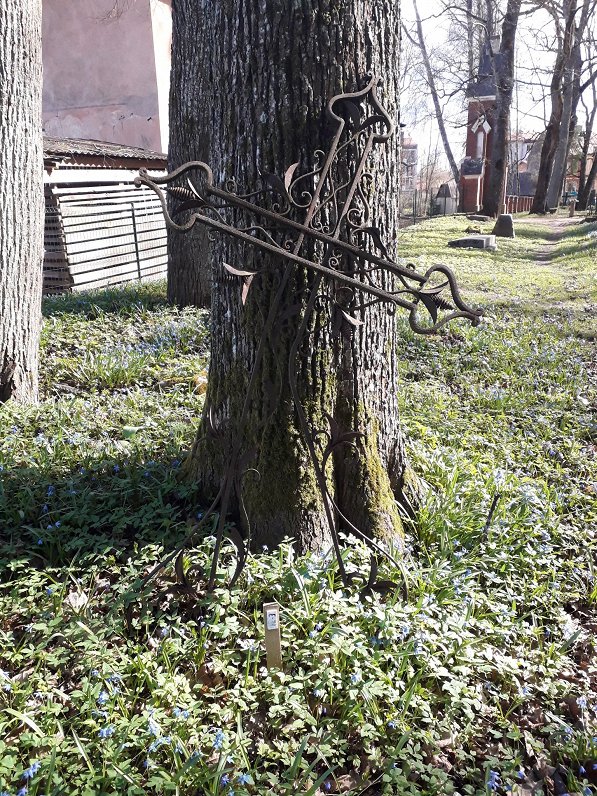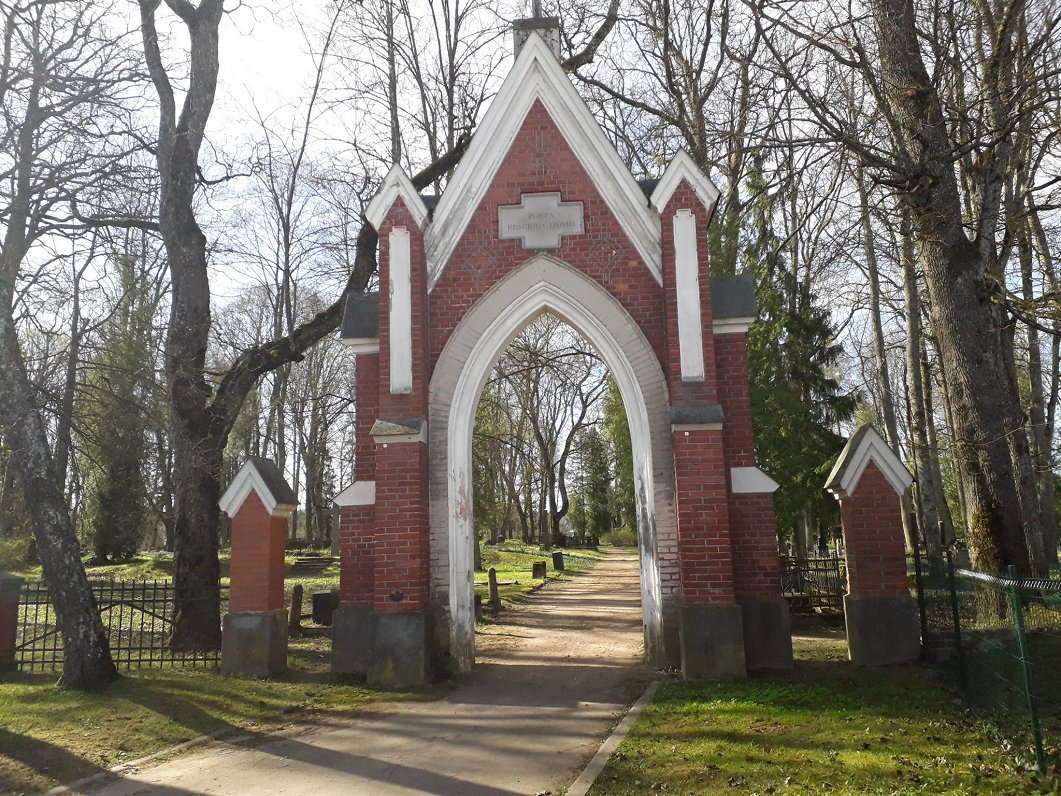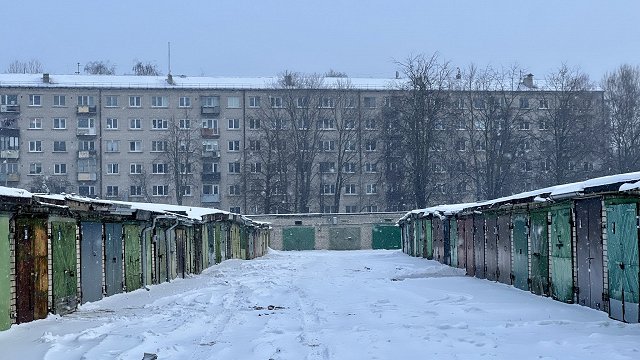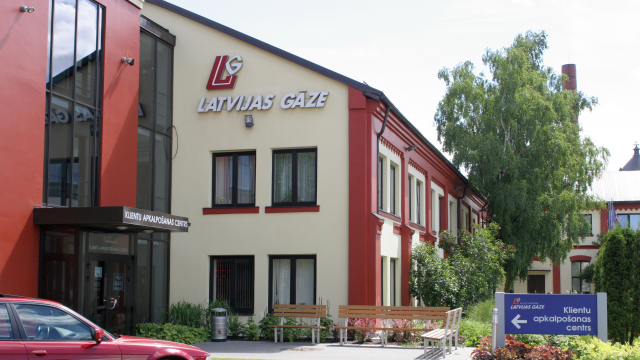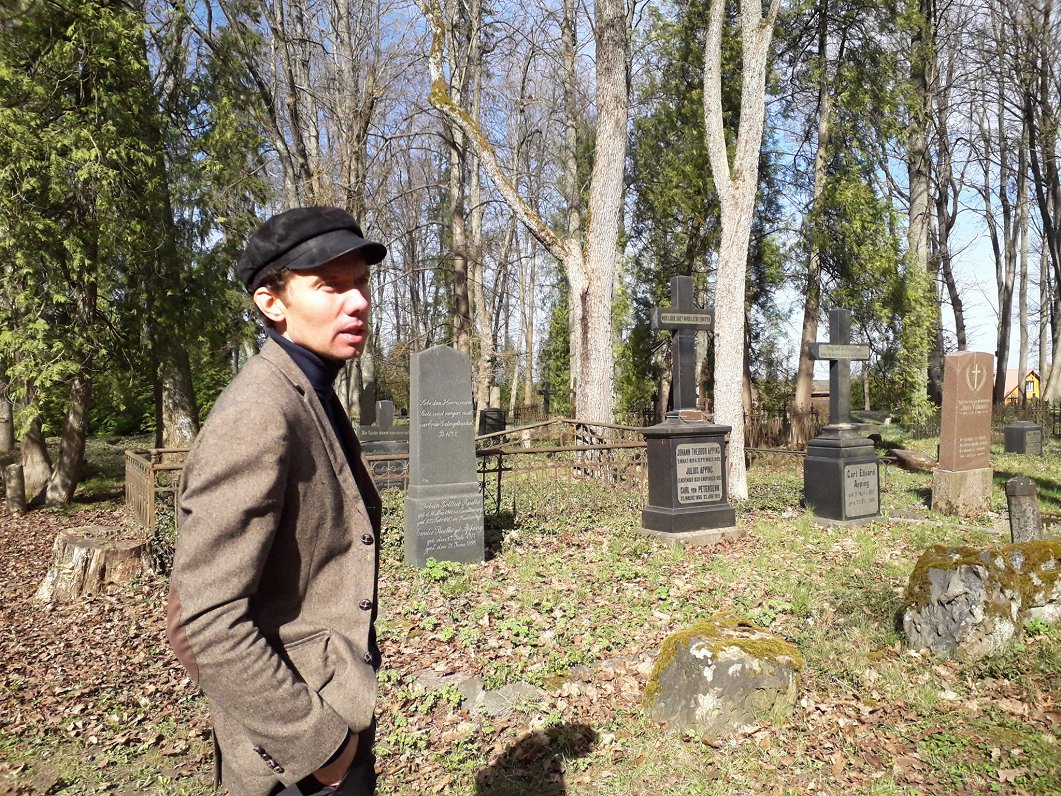
This is proven by Gundars Kalniņš. who will be our guide on a walk around the so-called 'German Cemetery' in Cēsis on a sunny April morning – and almost the first thing that is made clear is that to call it the 'German Cemetery' is a major misnomer. This realtively small scrap of land is the final resting place not only of Baltic Germans but of ethnic Latvians, Russians and Jews; Orthodox and Lutheran Christians. The red star of Communist atheism and the iron cross of 'German Germans' fighting in armies far from home have also been laid to rest here.
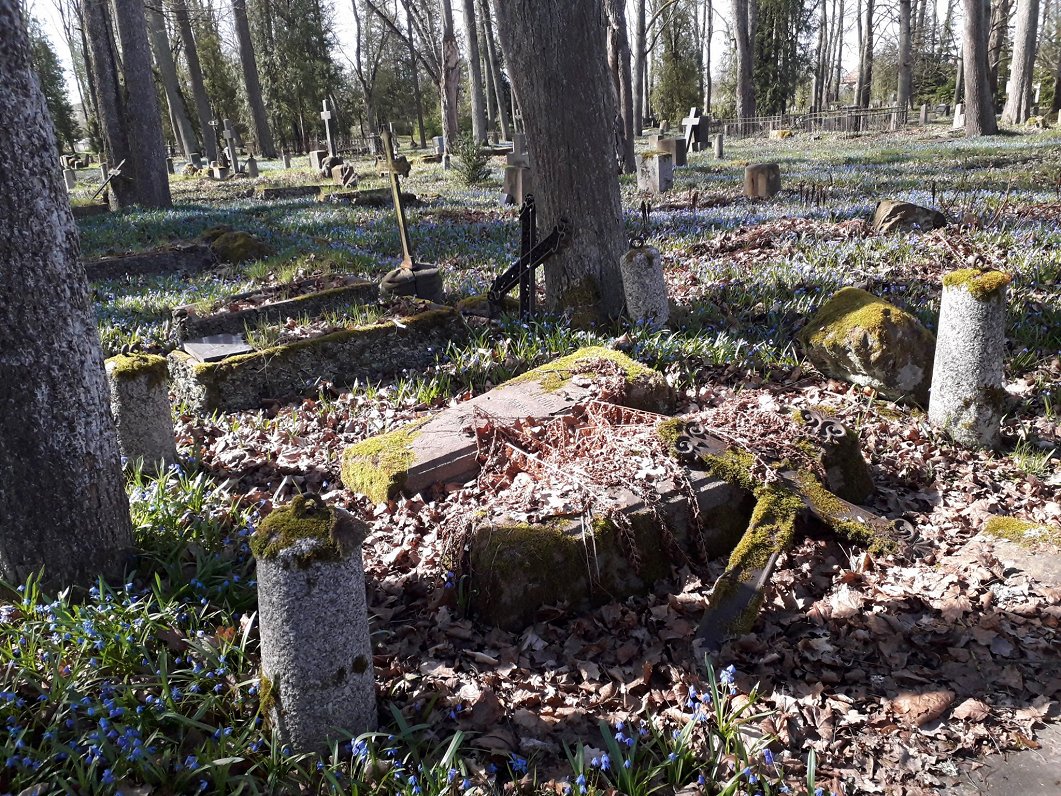
Gundars and his wife Elīna are both distinguished professional historians and have become legendary in their own lifetimes for taking a fresh and innovative approach to numerous aspects of Latvian history: from gardening in the medieval era to documenting Latvia's resistance to Soviet occupation and remembering local victims of the Holocaust.
Rather than transcribing our entire walk around the cemetery or just picking out selected highlights, we invite you to join us – if only virtually and aurally – on our hour-long ramble along the rustling and crunching pathways in two parts, the first of which is below.
Gundars' most recent project involves taking a radical new look at this particular cemetery and – by extension – all cemeteries. That involves not only cataloguing as many burials as possible (many of the graves are untended, partially or totally destroyed, or simply forgotten) but also scouring sources to find out the biographies of the deceased and their families, surveying the natural environment and species of flora and fauna in the cemetery, its geology, and discovering aspects of the cemetery economy such as who were the companies supplying headstones and when did the ironwork of a grand burial plot become irrestistible to thieves. There's also the matter of ideology – how do certain graves become 'unacceptable' at different points in history? Some even conveniently disappear only to reappear when they are approved of once again.
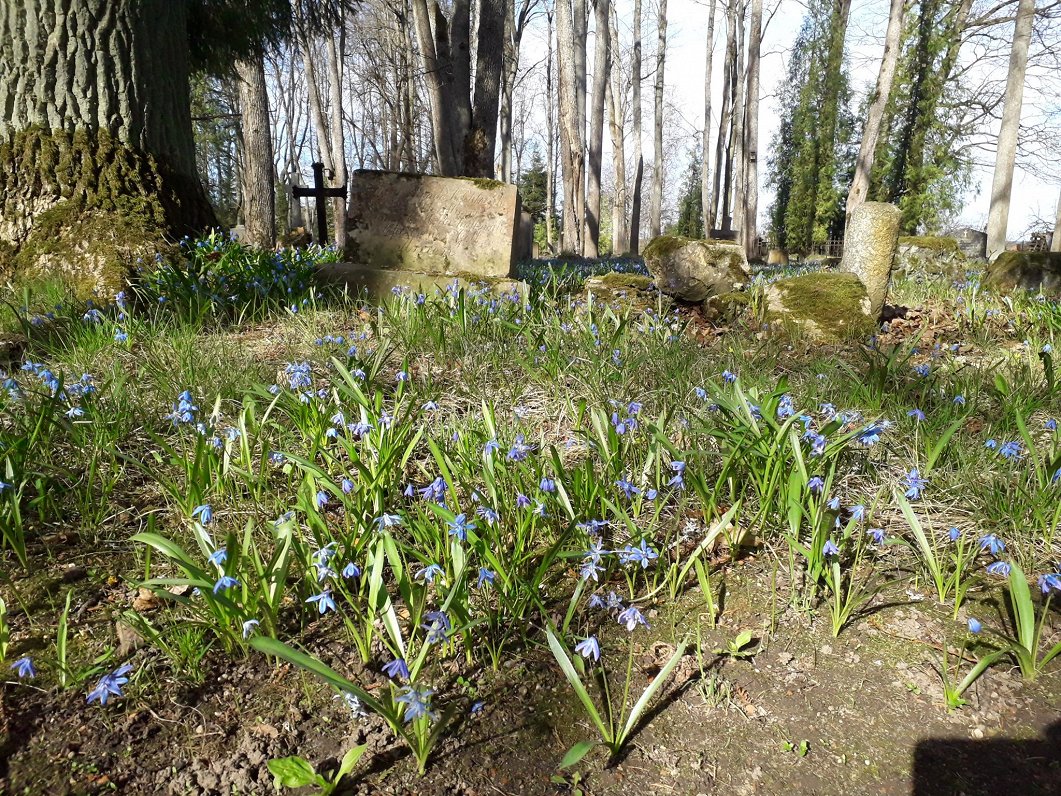
A conference on the project was held in November 2023 and Gundars even delivered a lecture about the cemetery in a local bar – and not just to a few history buffs at the bar but to dozens of people who were quite happy to spend a Friday night after work listening to the history of an almost-abandoned cemetery. The title was 'The saddest place in Cēsis'. It says a lot about the Latvian appetite for history – and perhaps something about the usual nightlife on offer in Cēsis on a Friday night.
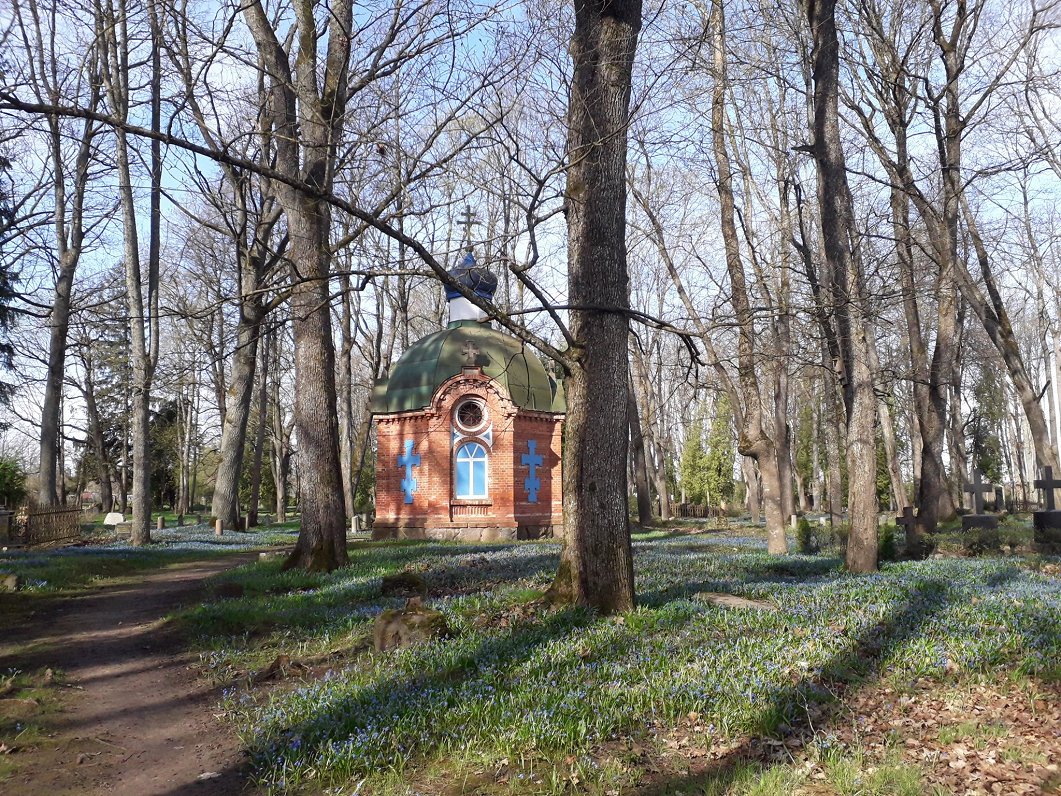
The conference and lecture featured three thematic sections which serve as useful tools for interpretation: "The cemetery and monuments" – about the possibilities of identifying and restoring grave monuments, "The cemetery and people" – deciphering and researching the names of people buried in cemeteries, and "The cemetery and traditions" focussing on the study of traditions practiced in cemeteries and possible preservation strategies.
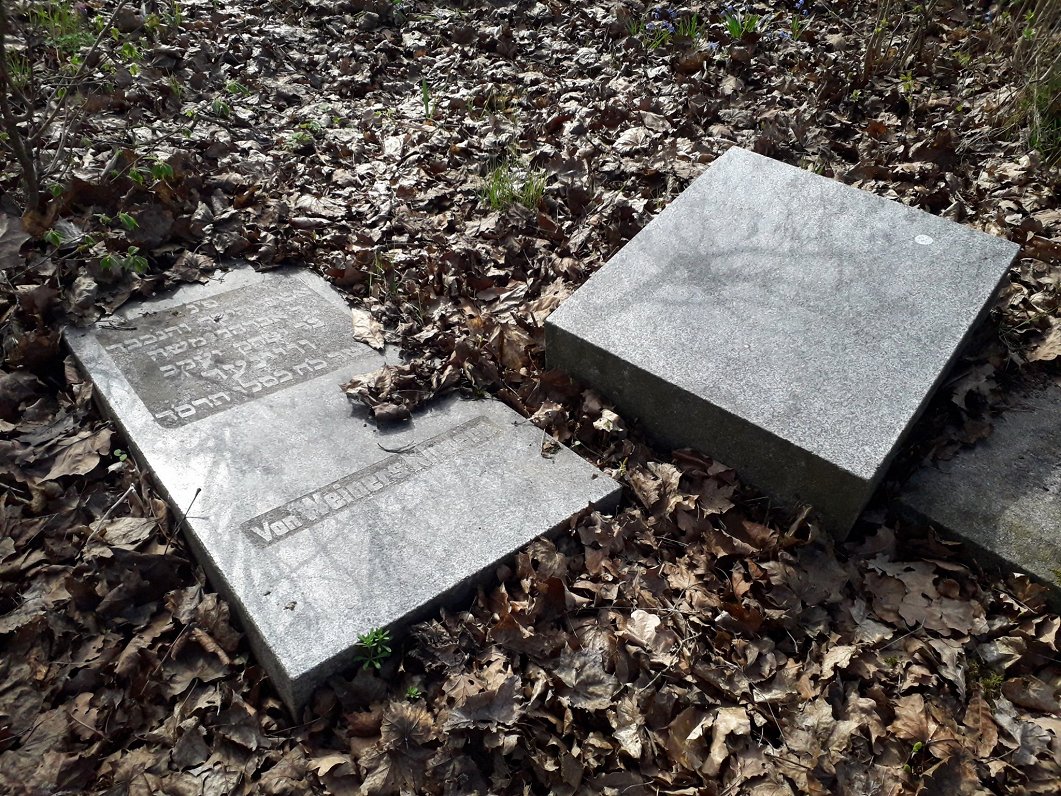
Why are there so many abandoned cemeteries in Latvia? The answer lies in the history of the 20th century: the mass emigration of the Baltic Germans, the Holocaust, the World Wars, occupations and independence struggles. In the second half of our graveside ramble, below, Gundars guides us through more of this cultural-historical-ideological landscape. The recording resumes after a woman in a garden directly adjoining the cemetery calls Gundars over and delivers another nugget of information about its history. It seems everyone in Cēsis knows not only who Gundars is, but considers that he serves as a sort of repository for any spare facts or family histories they might have lying around, as if he exerts a sort of historical magnetic force. And in part two there's also a surprise intervention by a military helicopter.
The Cēsis cemetery project continues with a series of guided tours having just started. The first of them took place on April 7 and again saw dozens of locals turning up – though whether it was the same ones who came to the bar five months earlier is hard to say with certainty.
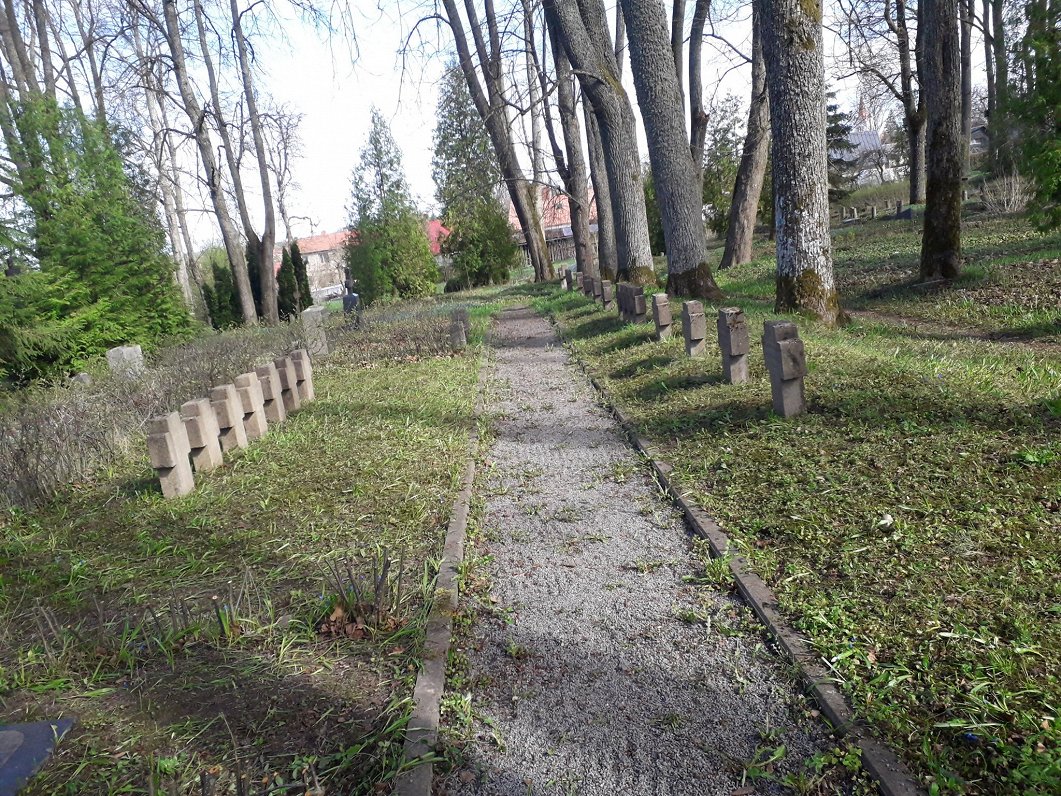
A website (https://kapseta.cesis.lv/) in both Latvian and German, plus a Facebook page dedicated to the project have been set up. The website allows visitors to browse the discoveries made so far and watch the lectures delivered at last year's conference on Cēsis' cemeteries – plus, of course, Gundars' now legendary bar-room lecture.
